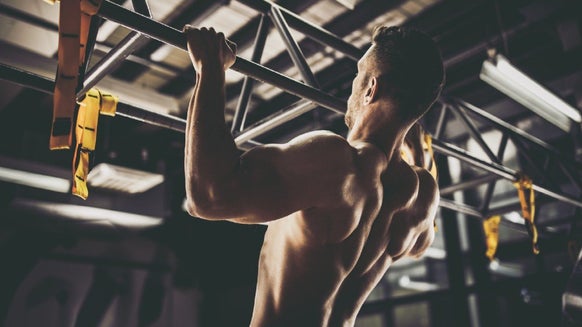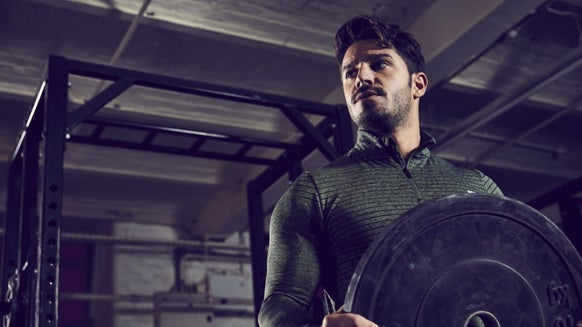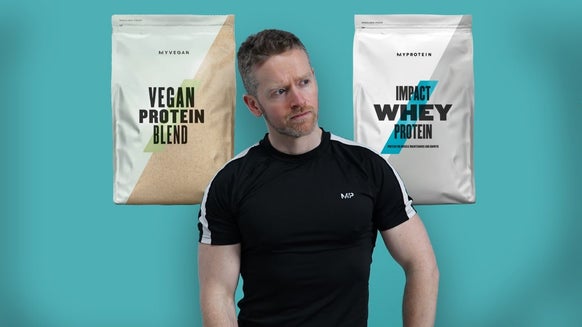 Squats are widely recognised as probably the most effective exercise for growing muscle in the lower body. They’re also one of the main three compound movements alongside the bench press & deadlifts and are used for many different reasons; in this case, we’re going to look at how these two different variations of squats can benefit you in terms of muscle hypertrophy.
Squats are widely recognised as probably the most effective exercise for growing muscle in the lower body. They’re also one of the main three compound movements alongside the bench press & deadlifts and are used for many different reasons; in this case, we’re going to look at how these two different variations of squats can benefit you in terms of muscle hypertrophy.Muscles involved
Although many muscles are worked during the squat movement, it is performed by many for targeting:1) Quadriceps2) Hamstrings3) GlutesHence why it's a leg-day favourite!
The area handling the most pressure changes throughout the movement, however each component is involved from start to finish. Upon the descent into a squat, the hamstrings are used to gradually ease the load down and allow for the weight to then be transferred onto the glutes while ‘down in the hole’ followed by the quadriceps and assistance from the glutes and hamstrings on the concentric contraction on the explosion back up.Barbell Squat | Technique
All movements that are free-weight require more than the ability to just shift weight. It’s necessary for stabilising muscles to come into play as well as your skill of balance in order to perform the movement safely and effectively. For example: when using a barbell, you must keep the bar level while descending and ascending through the movement, otherwise you’ll lose balance and could end up having to bail-out from the lift and run the risk of becoming injured.? Performing the barbell squat will ensure that you keep the weight centred and engage your core as well as stabilising muscles; this will mean that the amount of muscle fibres being used is greater as opposed to the smith machine. ? Having a free-weight bar also allows you more variety when choosing a position to hold the bar in, for instance if you were using a lower bar stance you could still keep the bar in line with your centre of gravity throughout the movement, but if you were to use the smith machine your legs would have to be further forward and in turn create more tension on the glutes and hamstrings.
Barbell Squat Technique1) Place your feet at a shoulder width apart and face them slightly outwards (25-30°).
2) Un-rack the barbell and place it at the rear of your shoulders; use your traps to rest the bar and find a comfortable length to hold the bar at (usually with arms near a 45°).3) Take a deep breathe, retract your scapular.4) Push out your chest and keep a neutral head and spine.5) Descend by bending your knees; maintaining a tight posture by engaging your core until you break parallel.6) Explode upwards from down in the hole while exhaling by engaging your quads.7) Repeat for the set amount of repetitions.8) Wait until you are stable at the top of the movement to re-rack the barbell by stepping forwards cautiously.Note: If you feel that your technique is not as strong as it could be, you may wish to consider incorporating more flexibility/mobility work into your training.
Smith Machine Squats | Technique
Using an assisted machine to perform a movement allows you to specifically target individual muscles more accurately and doesn’t require as much balance, which means that you may be able to use more weight.
? An advantage of the smith machine squat is being able to place your foot stance further forward than usual and target more of the glutes and hamstrings rather than the exercises being quadriceps-dominant.? Another benefit of using the Smith Machine Squat is that you are able to re-rack the weight at any point of the movement and save yourself from becoming stuck underneath the weight or having to bail-out. This option is slightly safer and could be beneficial for those who struggle with balancing while doing barbell squats.Smith Machine Squat TechniqueChoose your desired foot-distance (either shoulder width apart, or around 12 inches in front of yourself and the bar if you wish to engage more hamstrings and glutes.1) Face feet slightly outwards (25-30°).2) Push chest outwards, keep a straight back and a neutral head.3) Take the safety lock off the bar (usually by rotating it slightly).4) Descend slowly by unlocking the knees, until you break parallel .5) Drive upwards from the bottom of the movement by engaging your quadriceps.6) Do not lock out your knees at the top of the movement; continue for desired amount of reps/sets.7) Re-rack the weight by engaging the safety (rotate the bar the opposite way to which you disengaged the safety at the start of the movement).Which Squat Variation Should I Use?
In simple: Both.
BarbellBy using the barbell squat, you’ll incorporate more muscle fibres, stabilising muscles and help to improve your balance which is a valuable skill. You’ll also become more confident with other free-weight exercises. Barbell squats also allow you to descend while leaning slightly forward but still maintaining a neutral spine and neck/head; this is beneficial for some peoples body types and postures as well as powerlifters as you may be able to create more force from 'down in the hole'. Smith MachineSmith machine squats allow you to target muscles more specifically, so if you want to target more hamstrings and glutes, you’re able to adjust your foot placings and use the smith to help with the movement; the barbell squat will not allow this, as you’ll simply lose balance. Through the use of both exercises you’ll be able to improve your lower body muscle development, balance, core stability, and place emphasis on specific muscle groups in the lower body while gaining more confidence in the gym.Take Home Message
Try incorporating 3-4 sets of 8-12 repetitions of both these exercises into your training routine if you’re looking to increase hypertrophy of your lower body.
Remember; stay consistent! 
Myprotein World’s leading online sports nutrition brand Founded around a kitchen table in 2004, Myprotein’s vision has always been to revolutionise how we power movement.
In 2011 Myprotein became part of the THG family, and by 2016 we proudly claimed the title of the world’s leading online sports nutrition brand.
Over the last 20 years, we’ve created game-changing supplements like Clear Whey and Dry Scoop Pre-Workout and launched new brands tailored to your needs including MP, Myvitamins, Myvegan and MyPRO.
We exist to break boundaries. To help you cut through the noise in the fitness industry and get down to the information you can trust. Our blog features articles from trusted PT’s, nutritionists and dieticians with tons of experience in the industry. We listen to what topics you’re interested in, and dip into our pool of experts to give you information you can trust.











